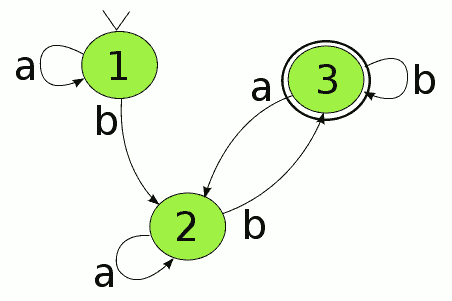所谓组件其实就是 有限状态机,通过状态渲染对应的界面,且每个组件都有自己的生命周期,它规定了组件的状态和方法需要在哪个阶段进行改变和执行。
有限状态机(FSM),表示有限个状态以及在这些状态之间的转移和动作等行为的模型。
React 正是利用这一概念,通过管理状态来实现对组件的管理。
自定义 React 组件时,根据需要会在组件生命周期的不同阶段实现不同的逻辑
组件的生命周期在不同状态下的执行顺序:
- 当首次装载组件时,按顺序执行 getDefaultProps、getInitialState、componentWillMount、render 和 componentDidMount;
- 当卸载组件时,执行 componentWillUnmount;
- 当重新装载组件时,此时按顺序执行 getInitialState、componentWillMount、render 和 componentDidMount,但并不执行 getDefaultProps;
- 当再次渲染组件时,组件接受到更新状态,此时按顺序执行 componentWillReceiveProps、shouldComponentUpdate、componentWillUpdate、render 和 componentDidUpdate。

问题:
- 为何 React 会按上述顺序执行生命周期?
- 为何 React 多次 render 时,会执行生命周期的不同阶段?
- 为何 getDefaultProps 只执行了1次?
详解 React 生命周期
自定义组件(ReactCompositeComponent)的生命周期主要通过三种状态进行管理:MOUNTING、RECEIVE_PROPS、UNMOUNTING,它们负责通知组件当前所处的状态,应该执行生命周期中的哪个步骤,是否可以更新 state。三个状态对应三种方法,分别为:mountComponent、updateComponent、unmountComponent,每个方法都提供了两种处理方法,will 方法在进入状态之前调用,did 方法在进入状态之后调用,三种状态三种方法五种处理方法,此外还提供两种特殊状态的处理方法。
- mountComponent -> MOUNTING
- updateComponent -> RECEIVE_PROPS
- unmountComponent -> UNMOUNTING
createClass创建自定义组件
createClass是创建自定义组件的入口方法,负责管理生命周期中的getDefaultProps getDefaultProps方法之执行一次。那样所有实例初始化的props将会被共享。
通过 createClass 创建自定义组件,利用原型继承 ReactCompositeComponentBase 父类,按顺序合并 mixins,设置初始化 defaultProps,创建元素 ReactElement。
状态一:MOUNTING
mountComponent 负责管理生命周期中的 getInitialState、componentWillMount、render 和 componentDidMount。
由于 getDefaultProps 是通过 Constructor 进行管理,因此也是整个生命周期中最先开始执行,而 mountComponent 只能望洋兴叹,无法调用到 getDefaultProps。这就解释了为何 getDefaultProps 只执行1次的原因。
由于通过 ReactCompositeComponentBase 返回的是一个虚拟节点,因此需要利用 instantiateReactComponent 去得到实例,再使用 mountComponent 拿到结果作为当前自定义元素的结果。
首先通过 mountComponent 装载组件,此时,将状态设置为 MOUNTING,利用 getInitialState 获取初始化 state,初始化更新队列。
若存在 componentWillMount,则执行;如果此时在 componentWillMount 中调用 setState,是不会触发 reRender,而是进行 state 合并。
到此时,已经完成 MOUNTING 的工作,更新状态为 NULL,同时 state 也将执行更新操作,此刻在 render 中可以获取更新后的 this.state 数据。
其实,mountComponent 本质上是通过 递归渲染 内容的,由于递归的特性,父组件的 componentWillMount 一定在其子组件的 componentWillMount 之前调用,而父组件的 componentDidMount 肯定在其子组件的 componentDidMount 之后调用。
当渲染完成之后,若存在 componentDidMount 则触发。这就解释了 componentWillMount - render - componentDidMount 三者之间的执行顺序。

状态二:RECEIVE_PROPS
updateComponent 负责管理生命周期中的 componentWillReceiveProps、shouldComponentUpdate、componentWillUpdate、render 和 componentDidUpdate。
首先通过 updateComponent 更新组件,如果前后元素不一致说明需要进行组件更新,此时将状态设置为 RECEIVING_PROPS。
若存在 componentWillReceiveProps,则执行;如果此时在 componentWillReceiveProps 中调用 setState,是不会触发 reRender,而是进行 state 合并。
到此时,已经完成 RECEIVING_PROPS 工作,更新状态为 NULL,同时 state 也将执行更新操作,此刻 this.state 可以获取到更新后的数据。
注意:此时 this.state 虽然获取到更新数据,但只能在内部源码中使用,我们在开发时,若在 componentWillReceiveProps 中调用 setState,那么在 componentWillReceiveProps、shouldComponentUpdate 和 componentWillUpdate 中还是无法获取到更新后的 this.state,即此时访问的 this.state 仍然是未更新的数据,只有在 render 和 componentDidUpdate 中才能获取到更新后的 this.state。
调用 shouldComponentUpdate 判断是否需要进行组件更新,如果存在 componentWillUpdate,则执行。
updateComponent 本质上也是通过 递归渲染 内容的,由于递归的特性,父组件的 componentWillUpdate 一定在其子组件的 componentWillUpdate 之前调用,而父组件的 componentDidUpdate 肯定在其子组件 componentDidUpdate 之后调用。
当渲染完成之后,若存在 componentDidUpdate,则触发,这就解释了 componentWillReceiveProps - componentWillUpdate - render - componentDidUpdate 它们之间的执行顺序。
注意:禁止在 shouldComponentUpdate 和 componentWillUpdate 中调用 setState,会造成循环调用,直至耗光浏览器内存后崩溃。(请继续阅读,寻找答案)

状态三:UNMOUNTING
unmountComponent 负责管理生命周期中的 componentWillUnmount。
首先将状态设置为 UNMOUNTING,若存在 componentWillUnmount,则执行;如果此时在 componentWillUnmount 中调用 setState,是不会触发 reRender。更新状态为 NULL,完成组件卸载操作
setState 更新机制
当调用 setState 时,会对 state 以及 _pendingState 更新队列进行合并操作,但其实真正更新 state 的幕后黑手是 replaceState。
replaceState 会先判断当前状态是否为 MOUNTING,如果不是即会调用 ReactUpdates.enqueueUpdate 执行更新。
当状态不为 MOUNTING 或 RECEIVING_PROPS 时,performUpdateIfNecessary 会获取 _pendingElement、_pendingState、_pendingForceUpdate,并调用 updateComponent 进行组件更新。
如果在 shouldComponentUpdate 或 componentWillUpdate 中调用 setState,此时的状态已经从 RECEIVING_PROPS -> NULL,则 performUpdateIfNecessary 就会调用 updateComponent 进行组件更新,但 updateComponent 又会调用 shouldComponentUpdate 和 componentWillUpdate,因此造成循环调用,使得浏览器内存占满后崩溃。

总结
- React 通过三种状态:MOUNTING、RECEIVE_PROPS、UNMOUNTING,管理整个生命周期的执行顺序;
- setState 会先进行 _pendingState 更新队列的合并操作,不会立刻 reRender,因此是异步操作,且通过判断状态(MOUNTING、RECEIVE_PROPS)来控制 reRender 的时机;
- 不建议在 getDefaultProps、getInitialState、shouldComponentUpdate、componentWillUpdate、render 和 componentWillUnmount 中调用 setState,特别注意:不能在 shouldComponentUpdate 和 componentWillUpdate 中调用 setState,会导致循环调用。

有限状态机

有三个特性:
- 状态总数(state)是有限的。
- 任一时刻,只处在一种状态之中。
- 某种条件下,会从一种状态转变(transition)到另一种状态。
javaScript语言是一种异步操作特别多的语言,常用的解决方法是指定回调函数,但这样会造成代码结构混乱、难以测试和除错等问题。有限状态机提供了更好的办法:把异步操作与对象的状态改变挂钩,当异步操作结束的时候,发生相应的状态改变,由此再触发其他操作。这要比回调函数、事件监听、发布/订阅等解决方案,在逻辑上更合理,更易于降低代码的复杂度。